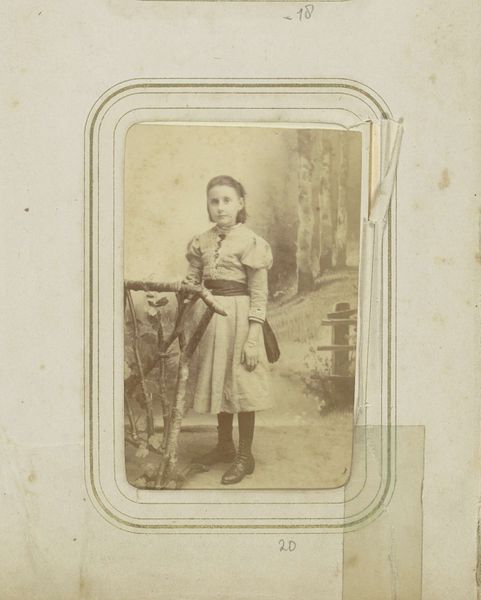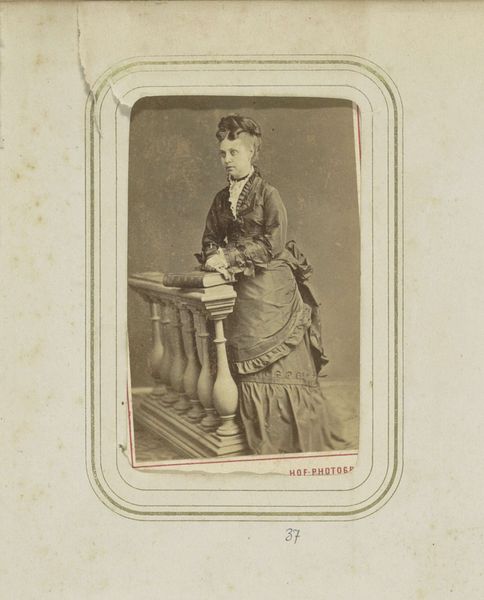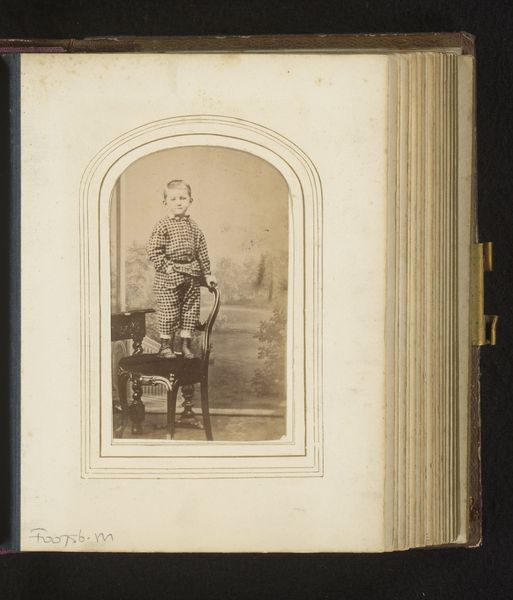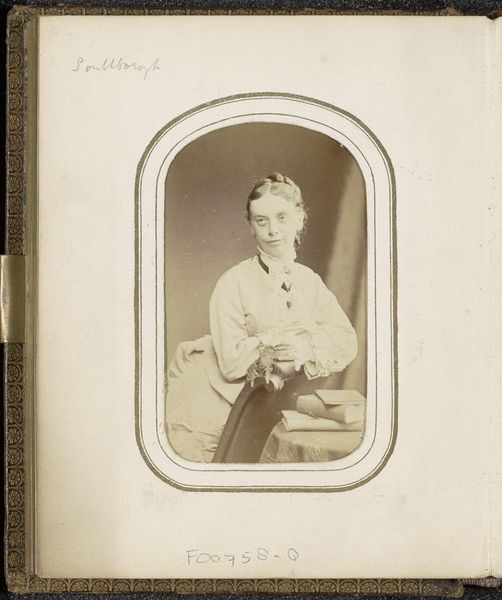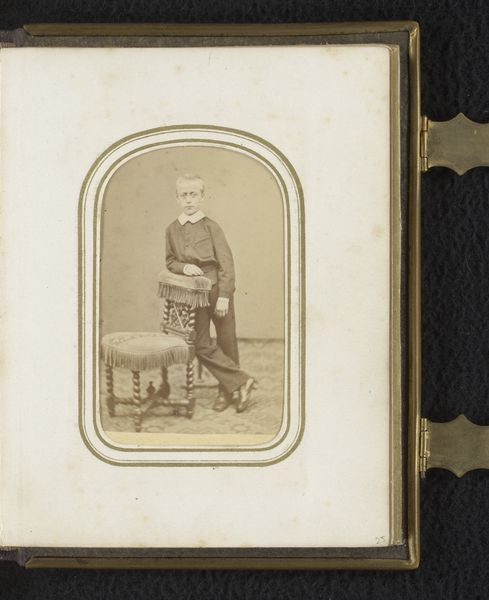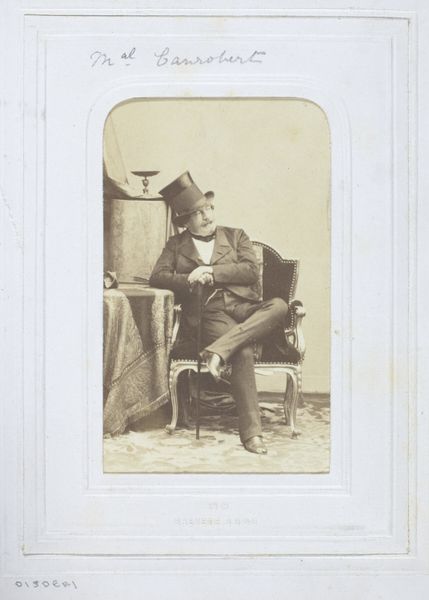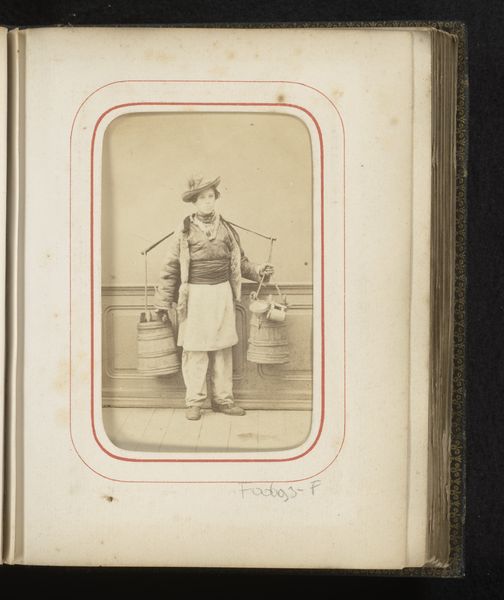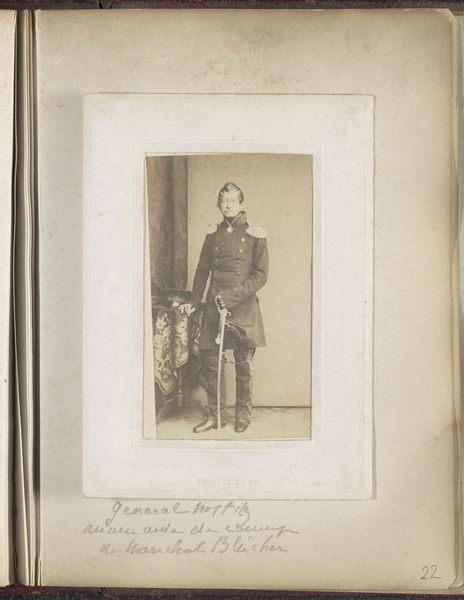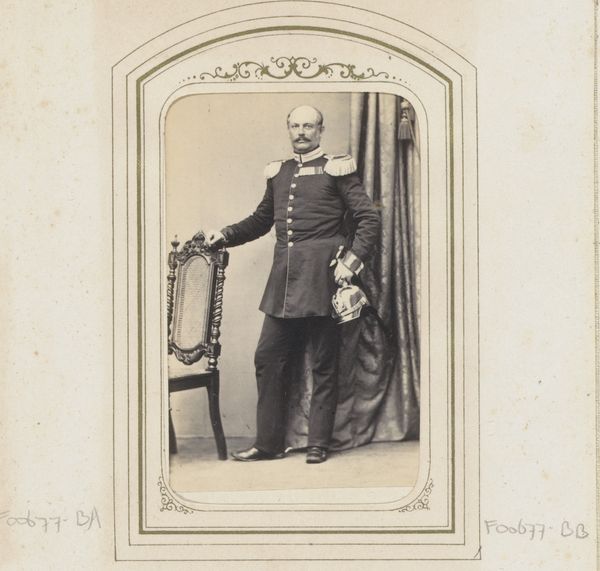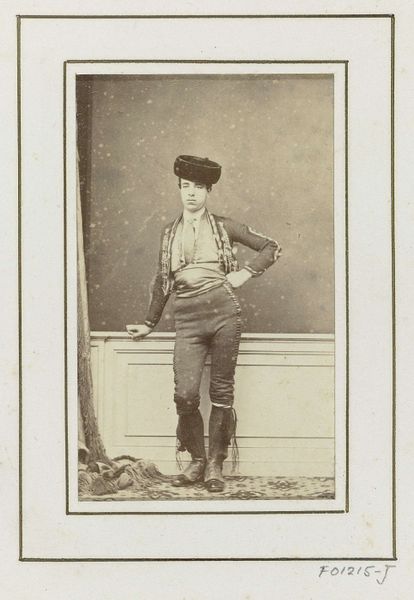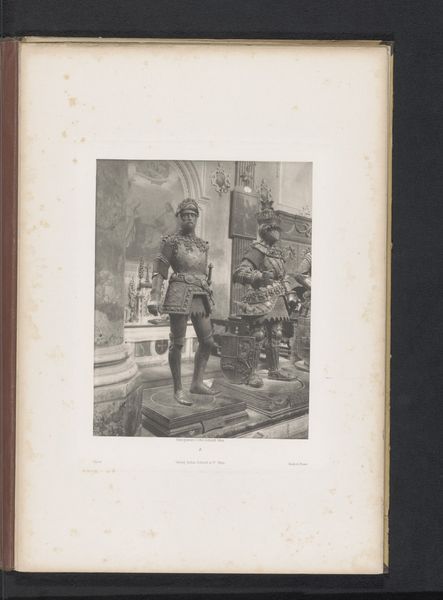
photography, gelatin-silver-print
#
portrait
#
photography
#
coloured pencil
#
gelatin-silver-print
#
history-painting
#
academic-art
#
watercolor
#
realism
Dimensions: height 85 mm, width 53 mm, height 101 mm, width 61 mm
Copyright: Rijks Museum: Open Domain
This photograph, portraying a military man, was produced by Leopold Haase & Co., sometime between 1831 and 1901. It is a ‘carte de visite’, a calling card, created through the wet collodion process. This technique involved coating a glass plate with light-sensitive chemicals, exposing it in a camera, and then developing the image immediately. It was a complex, time-sensitive process that demanded skill, speed, and precision. The popularity of carte de visite photography surged in the mid-19th century because it was a relatively inexpensive way to produce multiple copies of an image. This mass production was enabled by the industrialization of photography. The resulting photographs became accessible to a wider segment of society, extending beyond the elite who could afford painted portraits. This democratizing effect speaks volumes about the intersection of technology, labor, and social change in the Victorian era. Understanding photography's process and social context allows us to appreciate its historical significance, and the stories these images tell about a rapidly changing world.
Comments
No comments
Be the first to comment and join the conversation on the ultimate creative platform.
